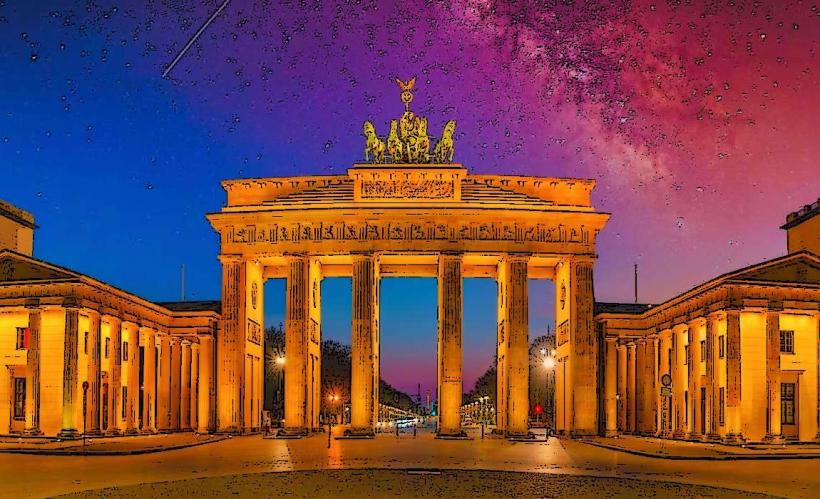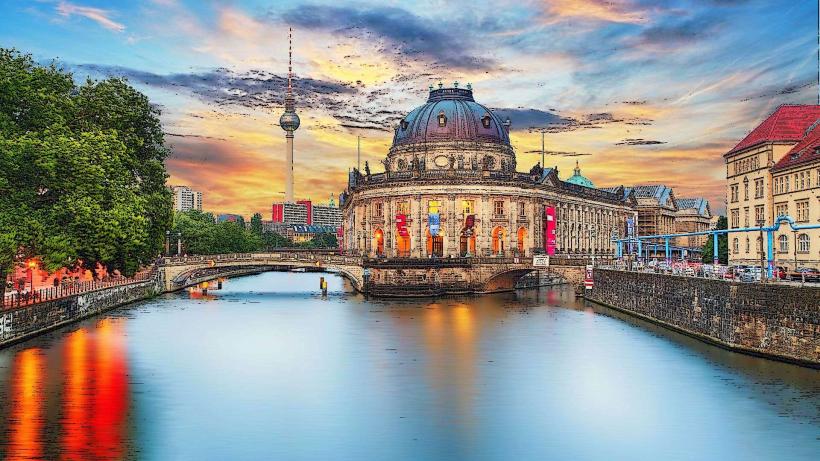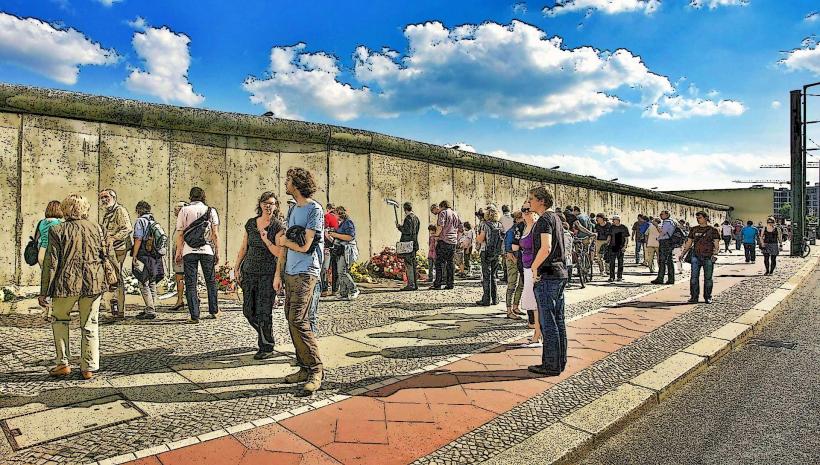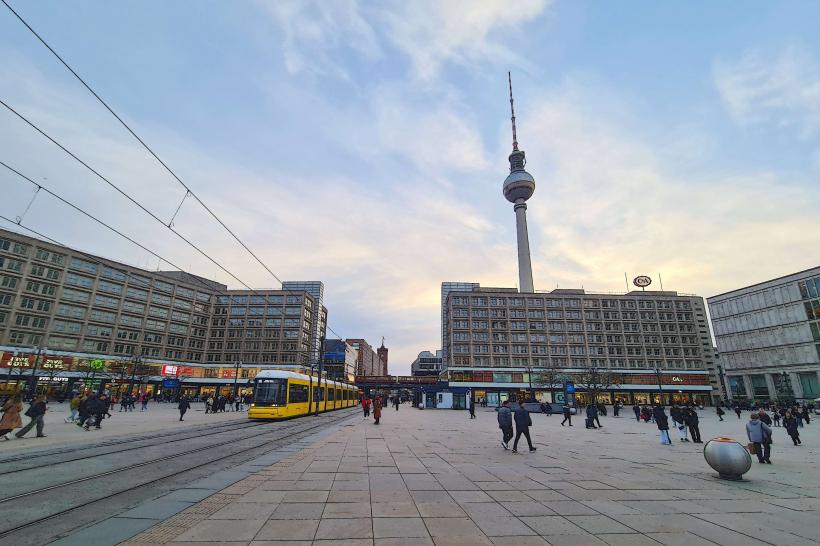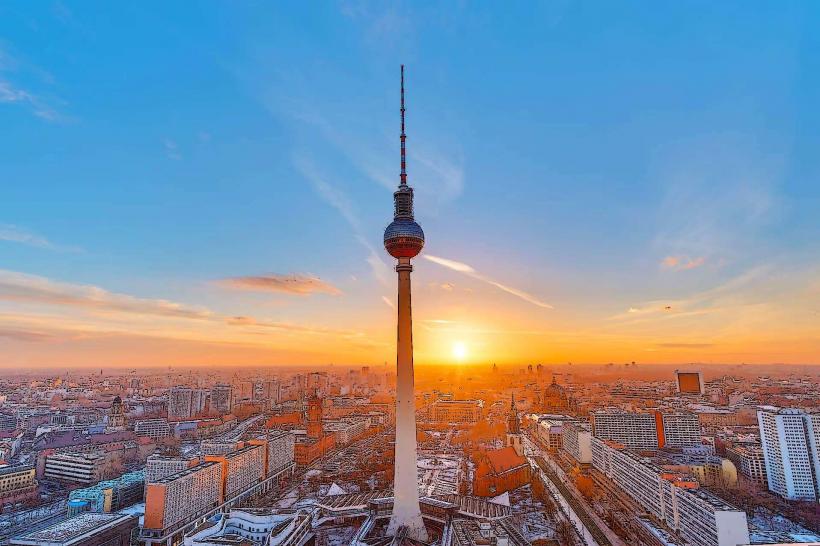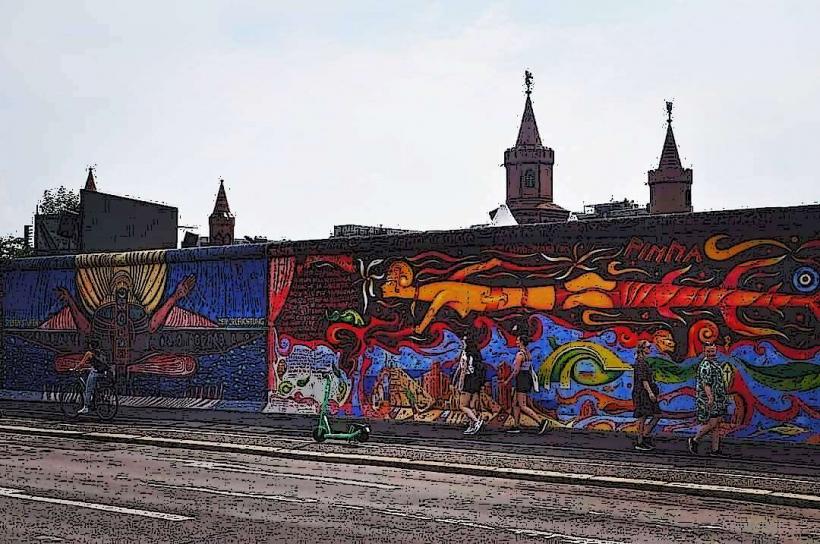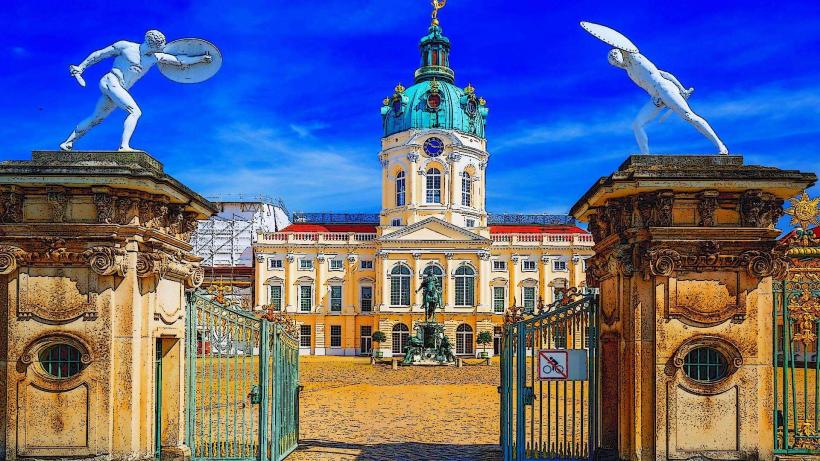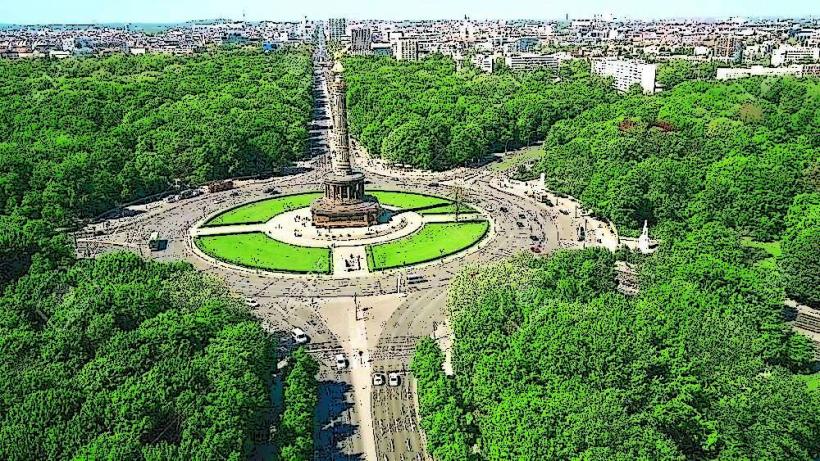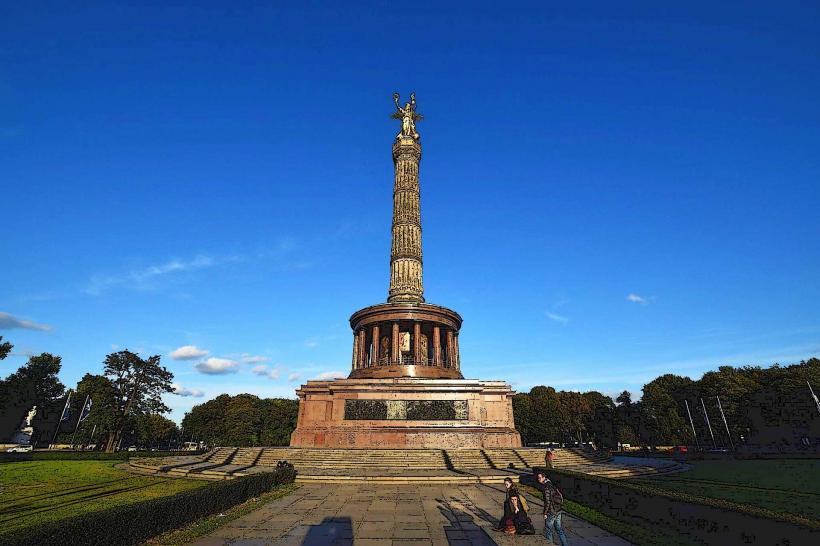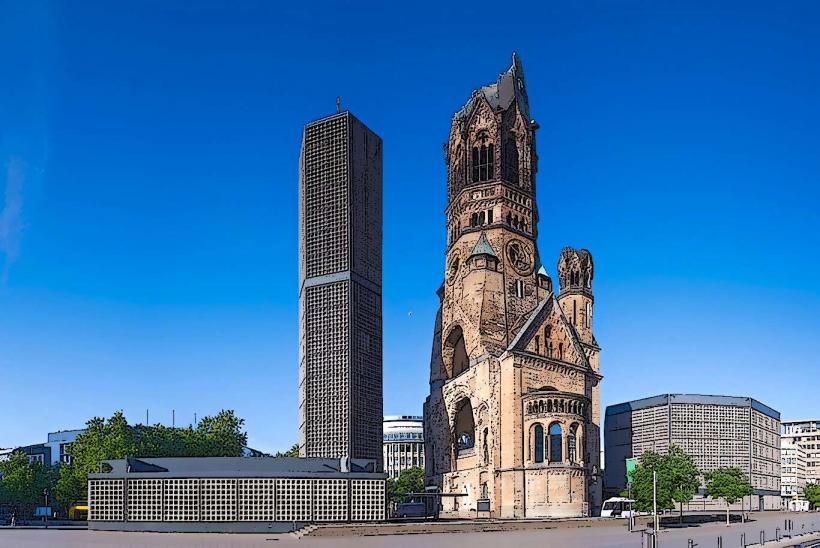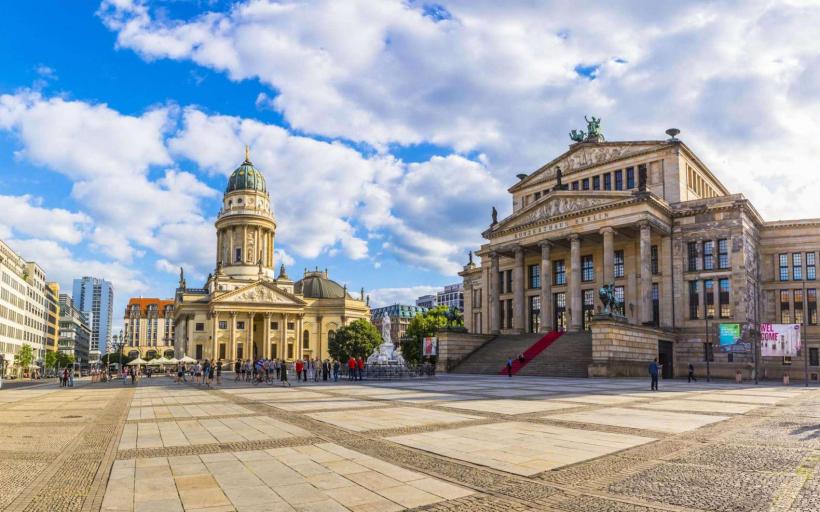Information
Landmark: Potsdamer PlatzCity: Berlin
Country: Germany
Continent: Europe
Potsdamer Platz is one of the most iconic and historically significant squares in Berlin, Germany. It has witnessed centuries of transformation and has become a symbol of the city's resilience, from its time as a bustling cultural and commercial hub to its devastation during World War II and its dramatic rebirth after the fall of the Berlin Wall. Today, Potsdamer Platz is a dynamic urban center, combining modern architecture, entertainment, shopping, and cultural experiences.
1. Historical Background
- Early History and Development: Potsdamer Platz dates back to the 18th century, where it originally served as an important junction for travelers on their way to Potsdam, the city south of Berlin. In the 19th century, it became a thriving commercial area and one of Berlin's busiest squares. The Berlin Wall would later split the square into two parts, but before that, it was a vibrant place full of theaters, restaurants, and shops.
- Early 20th Century: In the early 20th century, Potsdamer Platz was one of Europe’s busiest traffic hubs, surrounded by elegant hotels, department stores, and cultural venues. It was known for its modernity and architectural grandeur, including the Colossus, a famous cinema, and the Berlin Philharmonic.
- World War II and the Cold War: Potsdamer Platz was heavily damaged during World War II. After the war, it was located on the border between East and West Berlin, and the Berlin Wall ran directly through the square. As a result, it became a symbol of division, with little to no development in the area due to the wall’s presence.
2. Post-Wall Reconstruction and Redevelopment
- Rebuilding After the Fall of the Berlin Wall: After the Berlin Wall fell in 1989, Potsdamer Platz became a symbol of reunification and transformation. The square’s reconstruction began in the 1990s as part of the broader effort to revitalize central Berlin after the reunification of East and West Germany. A large-scale development project was launched to turn Potsdamer Platz into a modern commercial, cultural, and entertainment center.
- New Architecture and Design: The redevelopment of Potsdamer Platz saw the construction of modern office buildings, shopping centers, and hotels. Architects such as Renzo Piano, Helmut Jahn, and Richard Rogers played a major role in the design of the area. The Sony Center, with its futuristic glass roof, and the DB Tower, headquarters of Deutsche Bahn, stand as modern landmarks in the square.
- Completion of the Project: The redevelopment of the area was completed in the late 1990s and early 2000s, bringing new life to Potsdamer Platz. The square’s new identity as a commercial, cultural, and entertainment hub was solidified with the opening of attractions like the Cinemaxx multiplex, Potsdamer Platz Arkaden (shopping mall), and the Berlin Philharmonic.
3. Potsdamer Platz Today
- Modern Urban Hub: Today, Potsdamer Platz is one of Berlin’s most significant commercial and entertainment centers. It features a mix of office buildings, restaurants, cafes, retail stores, and entertainment venues, making it a key area for both locals and tourists. The square is home to some of the city’s most high-profile businesses and institutions.
- Cultural Significance: In addition to its commercial success, Potsdamer Platz also maintains a strong cultural identity. The Berlin Philharmonic, located just south of the square, is one of the world’s most renowned orchestras. The Deutsche Kinemathek (German Cinema Museum), which celebrates the history of German cinema, is also located here. The square is also a venue for cultural events such as the Berlin International Film Festival, which takes place annually in February.
4. Key Features and Landmarks
- Sony Center: One of the most striking buildings in Potsdamer Platz, the Sony Center is known for its glass and steel roof, designed by architect Helmut Jahn. The center features a range of restaurants, cafes, cinemas, and shops, and serves as a central meeting point in the area. The IMAX cinema located within the Sony Center is a major draw for film enthusiasts.
- Deutsche Bahn Tower: The DB Tower is the headquarters of Deutsche Bahn, Germany’s national railway company. The building, designed by architect Helmut Jahn, is a striking example of modern architecture and stands as a landmark at the southern edge of Potsdamer Platz.
- Potsdamer Platz Arkaden: This large shopping mall offers a wide range of retail stores, from fashion to electronics, making it a popular destination for shoppers. It is one of the busiest shopping centers in Berlin, attracting both locals and tourists.
- The Berlinale Palast: Located at the square, the Berlinale Palast is the venue for the Berlin International Film Festival (Berlinale), one of the most important and prestigious film festivals in the world. The Berlinale Palast hosts numerous screenings, premieres, and events each year, attracting celebrities, filmmakers, and film industry professionals from around the globe.
- Kulturforum: Located just a short distance from Potsdamer Platz, the Kulturforum is a cultural complex that houses several prominent institutions, including the Berlin Philharmonic, the Museum of Musical Instruments, and the Neue Nationalgalerie. It’s a central part of Berlin’s cultural scene.
- Memorial to the Murdered Jews of Europe (Holocaust Memorial): Although not located directly at Potsdamer Platz, the Holocaust Memorial is just a short walk away and is a solemn reminder of the atrocities of World War II. The memorial, designed by Peter Eisenman, consists of 2,711 concrete slabs arranged in a grid pattern and serves as a space for reflection and remembrance.
5. Events and Festivals
- Berlin International Film Festival (Berlinale): As one of the major events hosted at Potsdamer Platz, the Berlinale is a highlight of the cultural calendar in Berlin. The festival attracts top-tier filmmakers, actors, and cinephiles from all over the world, making Potsdamer Platz a global focal point for film.
- Christmas Markets: During the holiday season, Potsdamer Platz is home to one of Berlin’s most popular Christmas markets. The square transforms into a festive wonderland with holiday lights, food stalls, and handmade crafts. It’s a great place to enjoy seasonal treats and shop for unique gifts.
6. Transportation and Accessibility
- Public Transport Hub: Potsdamer Platz is a major transportation interchange in Berlin. It is connected to the city’s extensive public transport network, including S-Bahn (suburban trains), U-Bahn (subway), and bus lines. The Potsdamer Platz station is a central point for getting around the city.
- Walking Distance to Other Attractions: Potsdamer Platz’s central location makes it an excellent starting point for exploring nearby attractions. It’s just a short walk from major landmarks like the Brandenburg Gate, Reichstag Building, Berlin Wall Memorial, and Museum Island.
7. Architectural and Urban Development
- Modern Architecture: The redevelopment of Potsdamer Platz after the fall of the Berlin Wall involved the creation of many striking modern buildings, particularly glass-and-steel structures. The architectural design of the area reflects Berlin’s desire to rebuild itself as a global metropolis while embracing modernity and innovation. This transformation was part of a broader effort to revitalize central Berlin and connect its history with contemporary developments.
- Preserving Historical Aspects: While the area is known for its modern architecture, efforts have been made to preserve elements of Potsdamer Platz’s past. Some historical buildings, like the Bahnhof Potsdamer Platz (Potsdamer Platz Railway Station), were reconstructed or incorporated into the modern design, maintaining a sense of continuity with the city’s past.
8. Potsdamer Platz and the Berlin Wall
- Symbol of Division and Reunification: Potsdamer Platz holds deep symbolic significance for the Berlin Wall. Before the wall, it was one of Berlin’s busiest squares. After the wall’s construction in 1961, it became a desolate area, bisected by the border that separated East and West Berlin. The reunification of Germany and the restoration of Potsdamer Platz as a vibrant urban space represents the overcoming of division and the city’s return to unity.
- Berlin Wall Documentation: While the square itself was closed off by the Wall, visitors can find remnants of the Berlin Wall and learn about the Wall’s impact on Potsdamer Platz at nearby exhibits and memorials.
9. Conclusion
Potsdamer Platz is a living symbol of Berlin’s transformation. From its days as a historical cultural center to its destruction and division during the Cold War, and finally to its rebirth as a modern urban hub, the square represents the resilience of Berlin and its people. Today, it is a dynamic space filled with shopping, entertainment, culture, and history. Whether you're visiting for a movie at the Berlinale Palast, shopping at Potsdamer Platz Arkaden, or simply exploring its modern architecture, this iconic square offers something for everyone.

